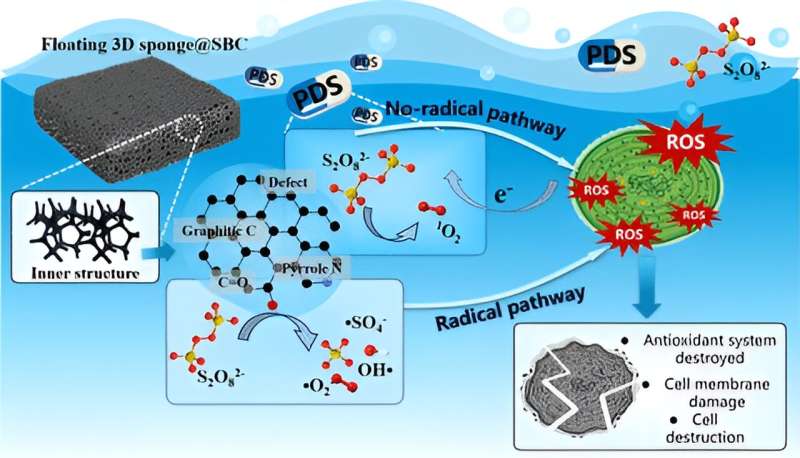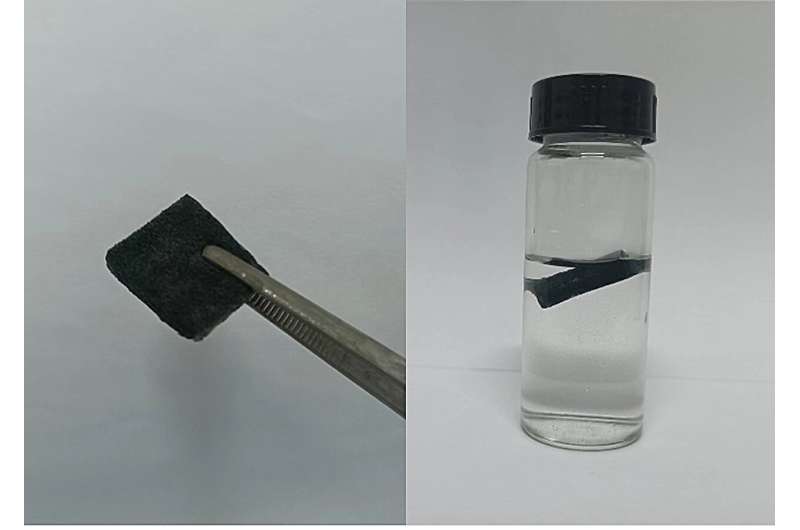This article has been reviewed according to Science X's editorial process and policies. Editors have highlighted the following attributes while ensuring the content's credibility:
fact-checked
trusted source
proofread
A floating sponge could help remove harmful algal blooms

In the peak heat of summer, beachgoers don't want their plans thwarted by harmful algal blooms (HABs). But current methods to remove or kill toxin-producing algae and cyanobacteria aren't efficient or practical for direct applications in waterways.
Now, researchers reporting in ACS ES&T Water have coated a floating sponge in a charcoal-like powder. When paired with an oxidizing agent, the technique destroyed over 85% of algal cells from lake and river water samples.
Swaths of electric green and bright orange-red HABs, or the less brilliantly colored cyanobacteria Microcystis aeruginosa, can produce toxins that can sicken humans and animals. Researchers have shown that acids and strong oxidizing agents damage and destroy M. aeruginosa cells, but simultaneously generate unwanted, potentially harmful products.
More recently, Jiangfang Yu, Lin Tang and colleagues suggested that persulfate-based oxidants could control this species' algal blooms, but these compounds require catalysts, such as powdered biochar—a charcoal-like substance made from carbon-containing waste—to be effective. So, the team wanted to develop a floating material containing biochar that would boost the destruction of harmful algal cells without damaging the environment with byproducts.

The researchers started with a porous sponge made of melamine and developed a powdered biochar from shrimp shells. They sandwiched a thin layer of polyvinyl alcohol between the sponge and the biochar, linking the layers together at 572 degrees Fahrenheit. In combination with a persulfate-based oxidizing agent, the floating sponge damaged the membranes of about 90% of the M. aeruginosa cells in lab dishes within five hours. After the membranes split apart, the cells released their internal contents, which rapidly broke down into smaller components.
In addition, the researchers applied the catalyst sponge and persulfate system to real-world lake and water samples, and found that it inactivated more than 85% of the algal cells. Based on the results, the team suggests that the new system could be a successful algal remediation technique in environments affected by blooms.
More information: Lifei Deng et al, Floatable 3D Sponge@SBC-Induced Dual-Pathway-Activated Persulfate for Microcystis aeruginosa Inactivation, ACS ES&T Water (2023). DOI: 10.1021/acsestwater.3c00202
Provided by American Chemical Society

















